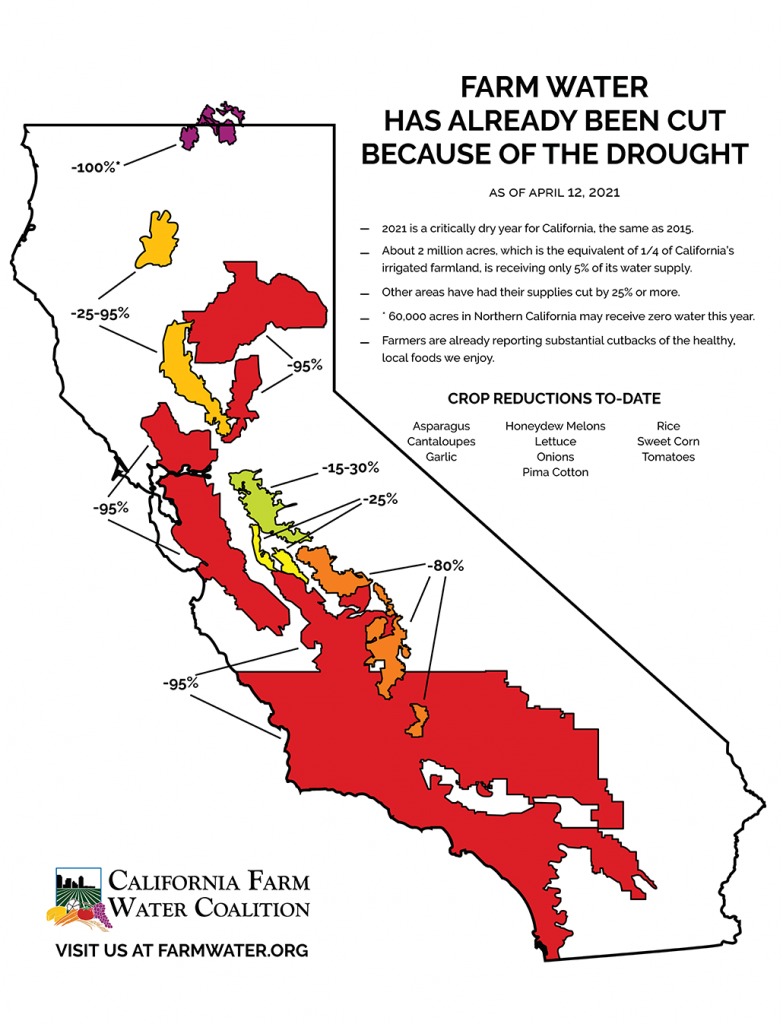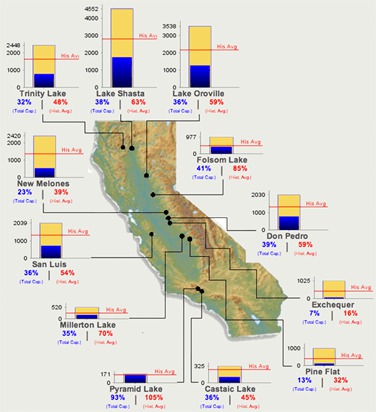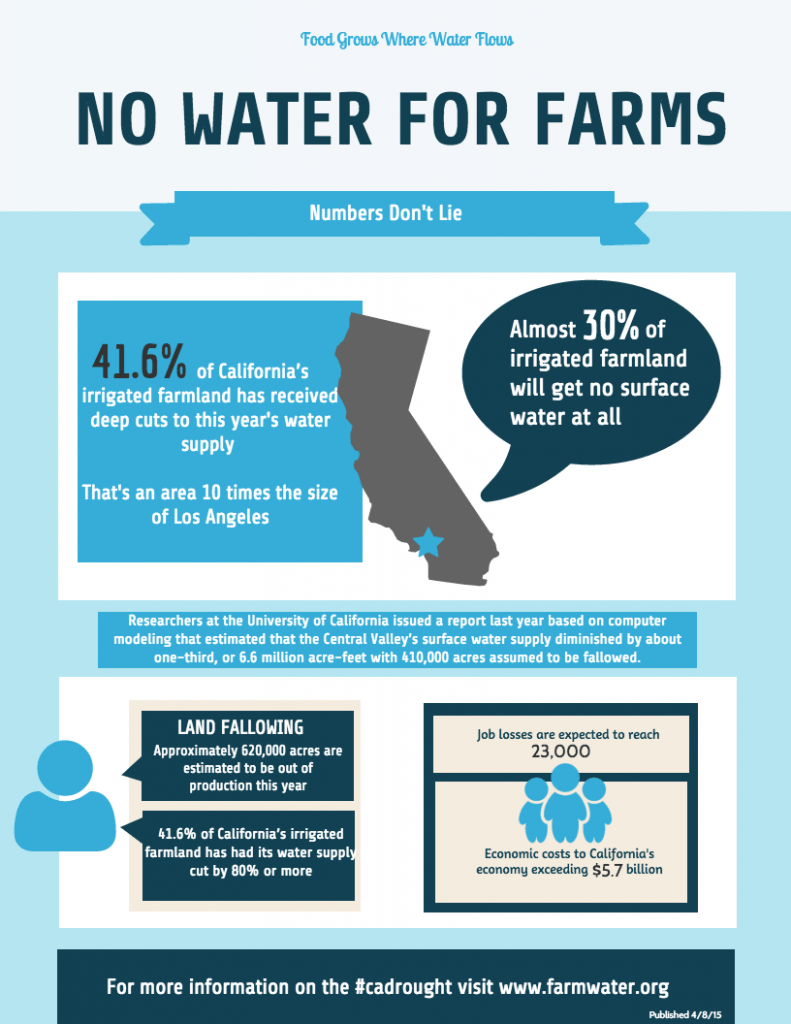One failure is we’re not capturing and storing nearly as much floodwater as we should.
Continue readingAre Curtailments a Balanced Water Use?
A Better Solution for Drought Resilience
Map Shows 2021 Farm Water Supply Cuts
Click here to see the latest map. Updated: June 2021 California farms are bearing the brunt of this year’s short water supply and have been forced to reduce the acreage of popular California crops, such as asparagus, melons, lettuce, rice, tomatoes, sweet corn, and others. Water supply reductions mean fewer fresh fruits and vegetables for […]
CDEC Reservoir Levels Map Copy
CDEC Reservoir Levels Map
California relies on water stored during wet years for use during dry years. Water storage, both above and below ground is critical to California. The map below shows how much water is in California’s major above-ground storage. These California’s Daily Reservoir Levels, per Department of Water Resources’ CDEC, is the water currently stored in […]
Over 41 percent of California’s irrigated farmland loses nearly entire surface water supply
Over 41 percent of California’s irrigated farmland will lose 80 percent or more of its normal surface water allocation this year, according to a new survey by the California Farm Water Coalition. The survey of agricultural water suppliers conducted the first week of April shows that 3.1 million acres, or 41.6 percent of California’s irrigated […]
Reservoir Levels Map
News Line – November 24, 2014
News Line – November 24, 2014 Read the latest news about issues affecting agriculture and farm water in California. No Coalition Responses Today Other News Water Bond OPINION: California opens door to new chapter in water policy From: J. Coleman & K. Tiegs, Sacramento Bee For California water managers, 2014 has been one for […]
News Line – November 21, 2014
News Line – November 21, 2014 Read the latest news about issues affecting agriculture and farm water in California. No Coalition Responses Today Other News Water Supply Feinstein shuts off California water talks until 2015 From: Michael Doyle, McClatchy DC Democratic Sen. Dianne Feinstein of California on Thursday pulled the plug on secret, high-stakes […]



